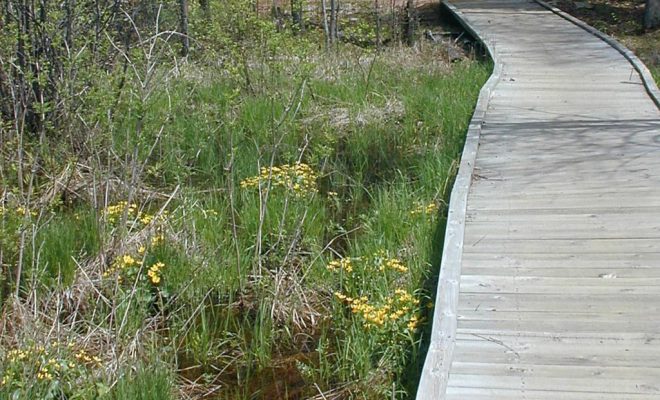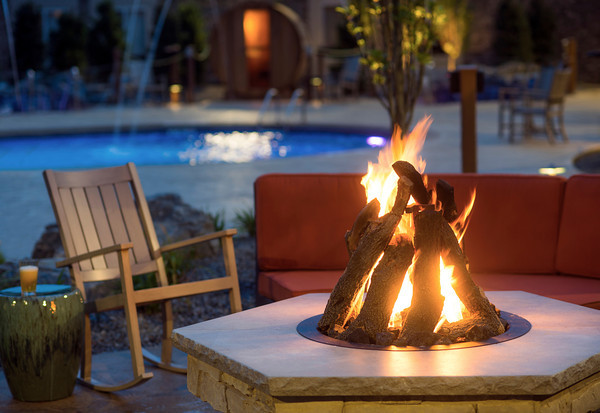Attendance at DNR-managed properties up

By Greg Seubert
MMC staff
MADISON – Apparently, the coronavirus is no match for Cabin Fever.
Attendance at DNR-managed properties is up and shows no sign of slowing down, even though campgrounds and park offices remain closed.
Gov. Tony Evers issued a Safer at Home order March 25 that remains in effect through at least Friday, April 24. Besides closing schools and nonessential businesses throughout Wisconsin, the order also calls for residents to remain home.
After the order took effect, the DNR waived all entry fees to state-managed recreation properties, including state parks, trails and recreation areas.
Free admission, warmer weather and an itch to get outside added up to some busy parks, according to Missy VanLanduyt with the DNR’s Bureau of Parks and Recreation Management.
“We were seeing an increase in visitation even when the fees were voluntary, which was for about a week before we waived all the fees,” she said. “We’re seeing an increase everywhere for this time of year and this kind of weather. It’s much more significant in some places than others. When you’re around population centers – Milwaukee, Madison, Green Bay, Hudson – the visitation is obviously much higher because there are more people.
“We can’t really distinguish if it’s because the fees are waived or because there’s nowhere else to go,” she said. “We’re seeing a lot of people go out that normally would have. We’re seeing a lot of people that are not buying stickers, but probably will once the fees are not waived anymore. It’s hard to gauge why. Whether we waived fees or not, I think we would still be seeing a fairly big increase in visitation because people are home, they’re not working or they’re working from home and their kids are off from school.”
Early-season crowds
So just how many people are checking out a state park or trail?
“We’re seeing in some cases numbers that we’d be seeing in July,” VanLanduyt said. “We don’t have all of our seasonal staff on board, but we’re prepared. We’re used to this. We’re not used to it this time of year, but this is not something that is foreign to us. We’re used to having nearly 18 million visitors in the course of a year. High visitation is not something that we’re afraid of.”
Places with high attendance so far this spring include Havenwoods State Forest, Lakeshore State Park, Hank Aaron State Trail and the Lapham Peak Unit of the Kettle Moraine State Forest in the Milwaukee area; Lake Kegonsa, Devil’s Lake and Blue Mound state parks near Madison; Willow River, Interstate and Kinnickinnic state parks, just across the border from the Twin Cities; and Kohler-Andrae and Harrington Beach state parks on Lake Michigan near Sheboygan.
“Folks are still traveling,” VanLanduyt said. “We’re seeing people go destination properties like Pattison, Amnicon Falls and Copper Falls (state parks). We’re also seeing an increase in the properties along the border because of Illinois (state parks) and the Chicago Lakefront being closed. Places like Big Foot Beach (State Park), the (Kettle Moraine State Forest) Southern Unit and Richard Bong (State Recreation Area) are seeing a lot of out-of-state travel. Some of those areas are being quite overrun when the days are nice.”
That’s not necessarily a good thing, according to VanLanduyt.
“The big complicating factor is that springtime in Wisconsin means that’s it’s wet,” she said. “The frost is coming out of the ground and it’s rainy. The issue there is we’re seeing high visitation at a time where the landscape can’t handle it. That’s one of the challenges we’re having. We have wet trails or wet areas that aren’t used to as much foot traffic as they’re getting.”
DNR officials are concerned about long-term effects the crowds will have on the landscape.
“I think we’re going to see long-term effects on the landscape,” VanLanduyt said. “We’re seeing some pretty significant erosion already. One of the things we’re advising visitors of is to be aware of potential areas that are closed when you get there. We’ve closed down a lot of areas already, but if there’s an area that we want to make sure is safe for our customers – maybe it’s slippery, maybe there’s water running – we are keeping an eye on that.
“A general rule is if it’s soft, you shouldn’t be on it,” she said. “Find a different trail. If you can be somewhere that’s paved or it’s hard and dry like limestone, that’s where we’d like you to go. As the temperatures warm up and as we get more snowmelt and more rain, we’re going to do our best to close off those areas that aren’t safe.”
VanLanduyt said park visitors should also keep ticks and pets in mind.
“Ticks are out already,” she said. “We have seen numerous ticks in the south, so wear protective clothing or use repellent.”
Rules are also in place regarding pets, she said.
“Dogs need to be on a leash 8 feet or less and folks need to pick up after their pets,” she said.
Large gatherings are also banned under the Safer at Home order.
“We are monitoring groups, providing gentle reminders that groups should be less than 10 and reminding folks about social distancing,” VanLanduyt said.
Find a place near home
Anyone wishing to check out a park should do it close to home, VanLanduyt said.
“There are public lands in nearly every county in the state,” she said. “Stay close to home and don’t travel outside of your community. You can go to the DNR web page and type in ‘explore the outdoors’ to find something in your community. If you type in ‘COVID,’ it’ll tell you what’s closed.”
Several state natural, wildlife and fishery areas also have trails and parking lots and are open to the public.
“If you don’t have a state park or a state trail in your county or community, you can still find other public lands to get out and enjoy the outdoors,” VanLanduyt said. “There are 38 public lands just in Dane County. That doesn’t mean you have to travel to Lake Kegonsa or two counties away to Devil’s Lake. I think it’s important for folks to realize there are more opportunities out there that they can explore.”






